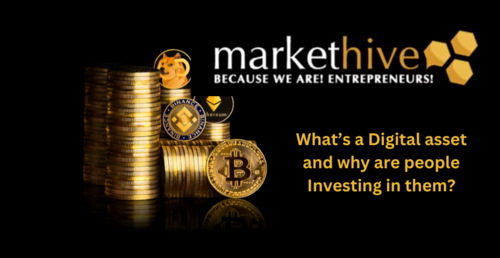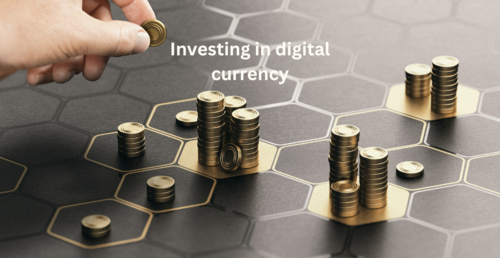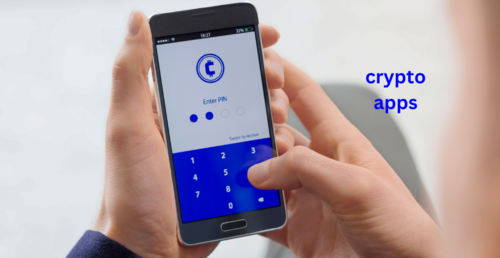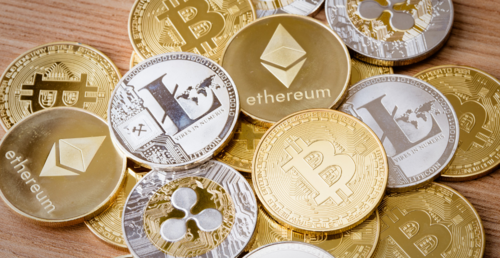
What’s a Digital asset and why are people Investing in them?

Bitcoin was originally designed as a new kind of digital money. One of the main reasons for its success is that it solved the challenge of trust in a digital setting – a challenge that was vital to overcome before digital money could really work. This was possible because of a new technology that forms the basis of Bitcoin and other cryptocurrencies: blockchain.
But the applications of blockchain don’t end at digital money. Ultimately, cryptocurrency is about more than just currency – it’s also a technology that can transform the digital apps and services that we use in all areas of our lives. Here’s the big picture.
.png)
Blockchain was Bitcoin’s big innovation. It essentially solved the problem of trust between people that don’t have an existing relationship. This is something that happens a lot in a digital setting.
Consider the last time you wanted to transact with someone you didn’t know – perhaps you wanted to rent their flat or buy something from them. You will have likely used an intermediary in order to feel confident that you weren’t going to be left high and dry. In the case of renting a flat for example, this could be Airbnb, and for transactions in general, this is often just a bank.
Blockchain replaces the need for an intermediary by programming in the rules for transactions and ensuring they are followed. The first application of blockchain technology was for digital money, but digital trust is a breakthrough that has opened up a world of other possible applications.
To understand this, let’s take a closer look at how Bitcoin works. Anytime there’s a change in the ownership of any amount of bitcoin, it’s entered into the Bitcoin database where all bitcoin transactions are recorded – this database is the blockchain. This change has to be approved by multiple computers in a network. Supposing the transaction is fraudulent, then the majority of the network would not approve it.
This is why you may have heard Bitcoin referred to as ‘decentralised’, which simply means that approvals depend on a network of parties rather than a central party. And it’s this approval process that means Bitcoin can be trusted by everyone who uses it.

Blockchain is essentially just about proving and approving things in a way that everyone can trust, even if they don’t have an existing relationship and are not using an intermediary.
There are three key areas of use for a technology that has solved trustworthy digital approvals.
The first big idea was currency, hence “cryptocurrency”. This is also sometimes referred to as digital currency. Bitcoin is the oldest and biggest example here.
The second big use for a technology that has solved trustworthy digital approval is contracts, which in the crypto world are called “smart contracts”. These are much like regular paper contracts with physical signatures, only they’re written on the blockchain and approved digitally in the same way bitcoin transactions are approved. They’re also programmed to be carried out automatically when the terms are met. A large part of the crypto industry today is focused on developing the best smart contract platform. Ethereum is the oldest and biggest example here, and Solana and Cardano are also in this group.
The third area of use for this technology is all the crypto applications that are built on top of smart contract platforms. Think about all the apps on your phone: they all do very different things but are all built on the same foundational technology (operating systems like Apple’s iOS or Google’s Android). It’s exactly the same for crypto. Smart contract platforms are the foundational layer for crypto (like the operating system on your phone) and all other cryptocurrency apps are built on top of them. There are thousands of new applications in this third area, in everything from gaming to financial services.

In finance, an asset is anything you own that has economic value. Cash, buildings and artworks, for example, are all considered assets.
A ‘digital’ asset, meanwhile, is simply anything you own that has economic value and only exists digitally. In the context of cryptocurrency, they’re used as a way to invest in all of the big applications for the technology cryptocurrency uses – whether as digital currency, smart contract platforms or apps built on top of smart contact platforms. They’re also often used in the projects themselves as an integral part of the application’s ecosystem, usually acting as an incentive for tasks to be carried out.
So why are people investing in them? Let’s look at it group by group.

People say they invest in a digital asset that is like currency for many of the same reasons they want to own and invest in currency like Dollars or Euros: either they find it useful for transactions, or they believe its value might increase compared to other currencies.

The value of digital assets in the area of smart contract platforms are, naturally, a bit different. Their value is more like shares in the development of a new foundational technology. You can think about why people consider investing in smart contract platforms as more like investing in a startup that is creating a new operating system for mobile phones. If it’s successful, the value of the investment will increase.

The hallmark of crypto technology is that it’s decentralised. That’s why a crypto app (application) is called a dApp – it’s just a term used to describe an app built on blockchain technology, which, as we saw, is decentralised.
You can think about why people consider investing in dApps as like investing in a startup building a new app. They believe it can be used to solve a need or improve on an existing service, in the same way, that Uber improved on the taxi or AirBnB improved on hotel bookings.
dApp development today is particularly intense in the areas of financial services, gaming and art, but there remain many areas for designers and developers to innovate in because the technology is still in its early stages and growing quickly.

Remember what happened with smartphone technology?
What’s happening with crypto today looks similar. Several foundational smart contract technology layers are competing for dominance in the same way that Nokia, Blackberry and Apple competed to be the operating system of choice for the world (and then Google arrived with Android). Meanwhile, the number and type of applications being created exploded, some of which changed how we live every day, and some of which never really worked or mattered at all.
A growing number of investors believe that the potential impact of crypto technology today is similar to what we saw with mobile technology. That means this could be the beginning of a new phase of value creation, but it’s important to keep in mind that no one knows the future.
While some early mobile technology went on to become a (huge) success, most early projects failed. Early-stage technologies carry opportunity and risk in equal measure, and you should never invest more than you can afford to lose.
In this article, we saw that there are three big areas to consider for your crypto investment strategy: digital currency, smart contract platforms and the dApps built on top of them. We have looked at each category in turn and explained what it is, but there’s more to dig into before you can decide for yourself.
Cryptocurrency is for everyone
NB >>To invest in crypto,click >> HERE
NB >> Join Markethive - a Huge Community of Crypto Entrepreneurs
The First Market Network Built on Blockchain click >> HERE
.png)
About: Andries vanTonder
Over 40 years selfemployed
He is a Serial Entrepreneur, an Enthusiastic supporter of Blockchain Technology and a Cryptocurrency Investor
Find me at my Markethive Profile Page | My Twitter Account | My Instagram Acount | and my Facebook Profile.
